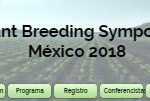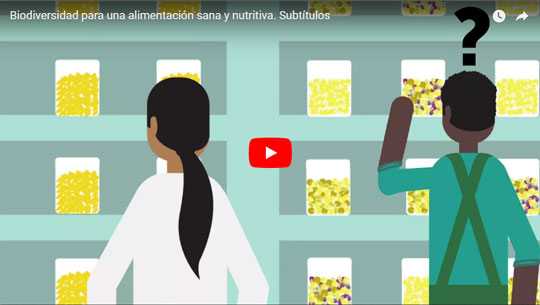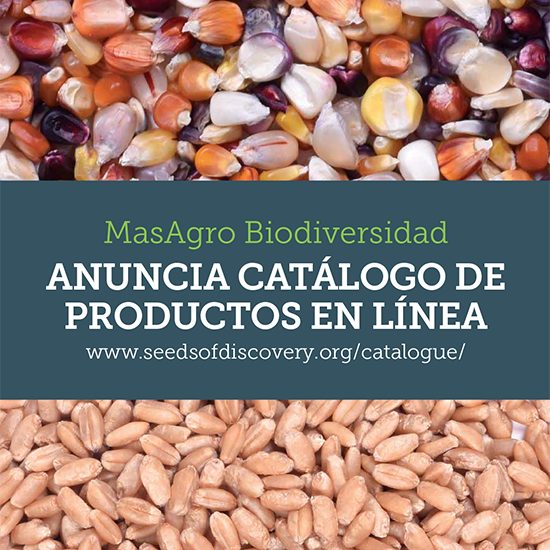-
Wheat Mexican Landraces Core Sets
This core set of 1,100 accessions is representative of the approximately 10,000 creole wheat landraces of Mexico currently preserved in CIMMYT’s germplasm bank, which originate from wheat varieties brought to Mexico by Spaniards. . Landrace core set accessions are promising for use in breeding wheat varieties with a broadened genetic base. The core set was selected based on phenotypic traits (heading, maturity, height, etc. under heat, drought and irrigated conditions, as well as grain quality measures), combined with genotypic data using 20,000 DArT-seq markers.Product details and features
- The list of Mexican wheat landrace core set entries and their complete passport information are available.http://germinate.cimmyt.org/wheat/?groupId=63#groups
- Genotypic data for the landrace core set are available in Dataverse for downloading via http://germinate.cimmyt.org/wheat/?groupId=63#groups
- Their genetic diversity profile in form of principal component analysis is available
- Grain yield and yield related trait data of Mexican core set under drought stress.http://germinate.cimmyt.org/wheat/?groupId=63#groups
- Grain yield and yield related trait data of Mexican core set under heat stress.http://germinate.cimmyt.org/wheat/?groupId=63#groups
-
Comments
The Mexican and Iranian wheat landrace core sets are currently in demand by researchers seeking sources of resistance to various biotic and abiotic stresses for use in their wheat improvement programs. Target environments: heat and drought prone stress environments. Target traits: secondary traits associated with heat and drought stress tolerance.
Availability
Currently available: Seeds of these entries are available from CIMMYT’s germplasm bank.
Primary Users
Wheat breeders, physiologists, geneticists and molecular biologists interested in investigating physiological mechanisms of biotic/abiotic stress tolerance as well as researchers pursuing gene discovery for various target traits in wheat such as biomass increase, grain size, grain weight, spike length, tiller number, culm strength, or grain filling period under heat and drought stresses.
For more information
- Please send us a message to Cimmyt-mab-seed@cgiar.org
News
NEWS
- Wheat phenotyping workshop
The International Maize and Wheat Improvement Center (CIMMYT) extends a cordial invitation to participate in the training workshop "Wheat phenotyping for the identification of germplasm with high yield potential and tolerance to drought and heat". This will be held in CIMMYT HQ, Texcoco, State of Mexico, on September 28th, 2018 (from 9:00 – 14:00 hrs) as part of the II Plant Breeding Symposium México 2018 (https://trasmejoragen.wixsite.com/inicio) The objective of this workshop is to train participants in the phenotypic characterization of wheat germplasm. Research themes include: climate change; priority characteristics for wheat for Mexico; phenotyping of genetically diverse materials and in the ...
- II Plant Breeding Symposium Mexico 2018
MasAgro Biodiversity announces the II Plant Breeding Symposium Mexico 2018 which will be held on September 6 and 7, 2018 at the CIMMYT HQ, Texcoco. Mexico. This event belongs to the series of DuPont Plant Sciences Symposia. For more information please visit the website:https://trasmejoragen.wixsite.com/inicio
- New video: Crop biodiversity for healthy, nutritious livelihoods
Erratic weather, poor soil health, and resource shortages keep millions of maize and wheat farmers in developing countries from growing enough to feed their households and communities or to harvest a surplus to sell.
- 3rd KDSmart app workshop
The International Maize and Wheat Improvement Center (CIMMYT) extends a cordial invitation to participate in the training workshop on the use of the KDSmart app. This will be held in Texcoco, State of Mexico, on December 20, 2017 (from 9:00 - 17:00 hrs).














